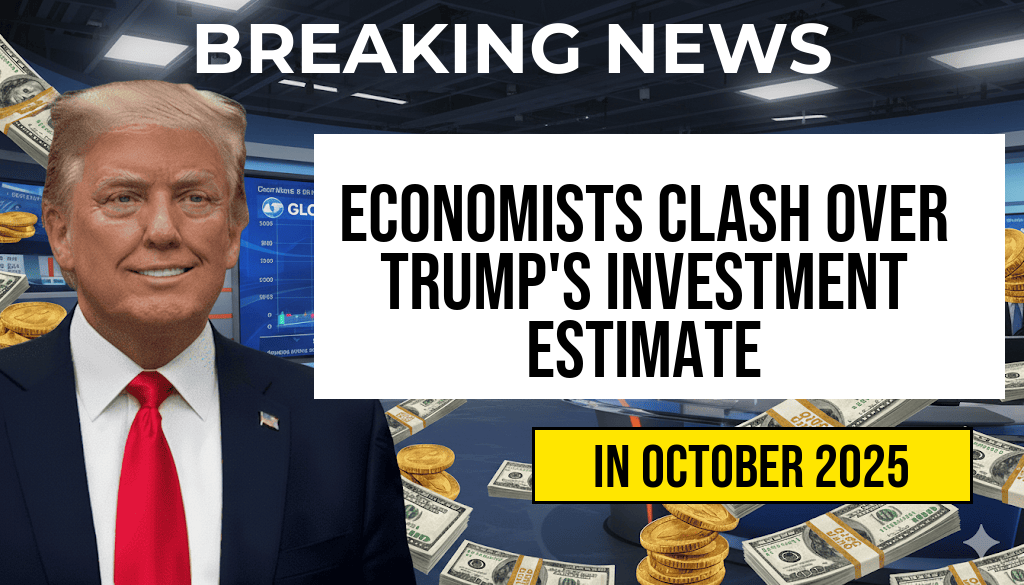Amid mounting debate, economists are divided over the accuracy and implications of former President Donald Trump’s claimed $17 trillion in global investments. Trump’s assertions suggest a substantial footprint across international markets, yet experts remain skeptical about the feasibility and transparency of these figures. While some analysts argue that such an extensive portfolio could bolster U.S. economic influence, others question whether the numbers reflect actual investments or if they serve political narratives. This controversy underscores broader issues surrounding the measurement of global economic influence, transparency in reporting, and the impact of high-profile claims on investor confidence and policy debates.
The Origin of the $17 Trillion Figure
Trump’s estimates of his global investments originated from statements made during campaign rallies and interviews, where he claimed to have invested heavily across various sectors and regions worldwide. The figure reportedly encompasses direct investments, holdings in international companies, and assets managed through private equity and venture funds. According to Trump, these investments contribute significantly to the U.S. economy by creating jobs, fostering innovation, and strengthening diplomatic ties. However, critics point out that no comprehensive, publicly available audit or disclosure substantiates the precise scope of these claims.
Expert Perspectives: Skeptics and Supporters
Skeptics Question the Numbers
Many financial analysts and economists argue that the $17 trillion figure is likely an exaggeration or an aggregation of unrelated assets. Dr. Lisa Chen, an economist at the Harvard Kennedy School, emphasizes the difficulty in verifying such claims. “Without transparent reporting standards, it’s nearly impossible to confirm whether these investments are real, diversified, or simply hypothetical projections,” she explains. Critics also suggest that inflating investment figures can be a strategic move to bolster political stature or influence market perceptions.
Supporters Argue for the Significance
Proponents contend that Trump’s reported investments reflect a substantial commitment to global markets, which can be viewed as a sign of economic strength and international engagement. Business advocate and former Trump advisor, Robert Matthews, states, “If even a fraction of these claims hold true, it demonstrates a robust network of U.S.-based influence and investment, which benefits American workers and industries.” Supporters also argue that such figures, whether fully accurate or not, highlight the importance of foreign investment in America’s economic future.
Implications for U.S. Economic Policy
The debate over Trump’s investment claims touches on broader questions about economic influence and national security. Advocates for increased transparency argue that accurate data is essential for policymakers to craft effective trade and investment policies. Conversely, skeptics warn against overreliance on potentially inflated figures, which could distort public understanding and policy priorities.
Potential Impact on Markets and Diplomacy
- Market Confidence: Investors may react positively to the idea of significant U.S. influence abroad, but skepticism could lead to volatility if the claims are questioned.
- Diplomatic Relations: High investment figures might be leveraged in negotiations, influencing trade agreements and diplomatic strategies.
Quantifying Global Investment: Challenges and Metrics
Measuring international investments is inherently complex. Traditional metrics such as direct foreign investments (DFI), foreign portfolio investments (FPI), and multinational enterprise activities often yield differing estimates due to variations in reporting standards and jurisdictional regulations. For instance, data from the UNCTAD highlights the challenges in capturing the full scope of cross-border capital flows.
| Type of Investment | Definition | Typical Data Source |
|---|---|---|
| Direct Investment | Investments in physical assets or business operations abroad | UNCTAD, OECD |
| Portfolio Investment | Investments in securities, such as stocks and bonds | IMF, World Bank |
| Private Equity and Venture Capital | Investments in private companies or startups | Preqin, PitchBook |
The Broader Debate: Transparency and Political Influence
The controversy surrounding Trump’s investment figures underscores a persistent challenge in political discourse: the transparency and verification of large-scale financial claims. Without detailed disclosures, it becomes difficult to assess the true scope of foreign investments linked to political figures or candidates. This ambiguity can influence voter perceptions, market stability, and international relations.
Calls for Greater Oversight
- Legislative Action: Some lawmakers advocate for stricter disclosure requirements for political figures with international assets.
- Enhanced Reporting Standards: Financial institutions and regulatory agencies are urged to develop clearer guidelines for reporting cross-border investments.
As the debate continues, the core issue remains: distinguishing between credible financial influence and inflated claims. With global markets becoming increasingly interconnected, understanding the true scale of investment flows is vital for policymakers, investors, and the public alike. Whether Trump’s $17 trillion figure will withstand scrutiny or serve primarily as a political narrative, it has already ignited a broader conversation about transparency, influence, and the real reach of American economic power.
Frequently Asked Questions
What is the main focus of the article titled “The 17 Trillion Dollar Question”?
The article discusses the debates among economists regarding President Trump’s estimated global investment figures amounting to 17 trillion dollars.
Why are economists clashing over Trump’s estimated global investment figures?
Economists are clashing because of differing interpretations and methodologies used to calculate the 17 trillion dollar figure, leading to disagreements on its accuracy and implications.
What are the potential implications of these differing estimates for the global economy?
The varying investment figures could influence policy decisions, investor confidence, and perceptions of economic growth at both national and international levels.
How do economists justify their differing perspectives on Trump’s investment estimates?
Economists justify their perspectives based on data sources, calculations, and assumptions about investment flows and economic impact, which lead to divergent conclusions.
What can readers learn about the significance of accurate global investment measurement from this article?
Readers can understand the importance of accurate measurement in assessing economic health and the challenges involved in estimating large-scale investment figures.

Leave a Reply